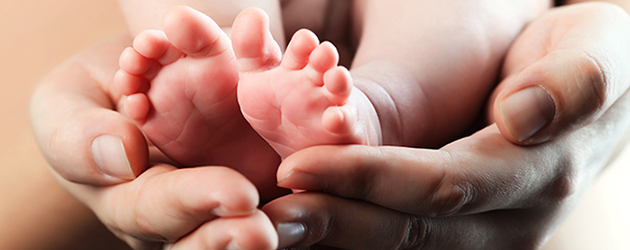What is semen volume?
Semen volume refers to the total amount of semen ejaculated. Between between 1.0ml and 6.5ml of ejaculate per orgasm are considered normal[1]”Essig, Maria G.; Edited by Susan Van Houten and Tracy Landauer, Reviewed by Martin Gabica and Avery L. Seifert (2007-02-20). “Semen Analysis”. Healthwise. WebMD. Retrieved … Continue reading and it may vary between 0.1 and 10 milliliters[2]”Rehan, N.; Sobrero, A.J.; Fertig, J.W. (1975). “The semen of fertile men: statistical analysis of 1300 men”. Fertility and Sterility 26 (6): 492–502. PMID 1169171“. In order to compare the volumes, please note that a teaspoon holds 5 ml and a tablespoon holds 15 ml.
Ejaculated semen volume is directly affected by the time that has passed since the previous ejaculation; larger semen volumes tend to be ejaculated following longer periods of abstinence.
The duration of the stimulation leading up to the ejaculation can affect the volume[3]”Pound, N.; Javed, M.H.; Ruberto, C.; Shaikh, M.A.; Del Valle, A.P. (2002). “Duration of sexual arousal predicts semen parameters for masturbatory ejaculates”. Physiol Behav 76 … Continue reading.
www.amitamin.com/en/fertilsan-m New life deserves the best possible start!We provide the essential building blocks for this.
The World Health Organisation\’s male fertility guidelines consider 1.5 ml as the lower reference limit for the amount of semen per ejaculation[6]”https://humupd.oxfordjournals.org/content/16/3/231“.
Previous to this downward revision, 2 ml was considered normal[7]”Essig, Maria G.; Edited by Susan Van Houten and Tracy Landauer, Reviewed by Martin Gabica and Avery L. Seifert (2007-02-20). “Semen Analysis”. Healthwise. WebMD. Retrieved … Continue reading
A worrying history
How to increase male fertility
There are a number of things a man can do to improve his fertility. These include lifestyle choices such as the elimination of fast food, nicotine and alcohol, regular exercise, restful sleep and the reduction of stress.
In addition, scientific studies have show that an increase in sperm count can be achieved by taking the following food supplements:
How To Increase Semen Volume Naturally

The sperm generation process is particularly sensitive to external factors. These include trauma (heat, physical force), energy and nutrient supply for the cells “under construction” as well as oxidative stress.
There are a number of things a man can do to improve his fertility. These include lifestyle choices such as the elimination of fast food, nicotine and alcohol, regular exercise, restful sleep and the reduction of stress.
In addition, scientific studies have show that an increase in sperm count can be achieved by taking the following food supplements:
- amino acids such as Arginine and Carnitine
- antioxidants such as Glutathione and and co-emzyme Q10
- trace metals such as zinc and selenium
- vitamins such as A, B9 (folic acid), C, D and E
- extracts such as pine bark extracts (Pycgnogenol)
These amino acids, vitamins and trace elements are naturally occurring nutrients and no side effects are to be expected. On the contrary, increasing the supply of such micronutrients causes significant health benefits such as a stabilisation of the immune system, a positive effect on cardiovascular circulation and skin and hair health.
There is therefore no medical reason not to implement a micronutrient rich diet for a minimum of six months to increase fertility. Ideally this should be carried on until successful conception.
VIDEO: Learn How To Read a Semen Analysis (video 2 of our video series)
More sperm volume-enhancing nutrients

Dr. Kooner is Deputy Director of The Advanced Fertility Center of Chicago and has been a Specialist in Fertility Treatment since 1999.
As well as the areas that the clinic specialises in general, he is particularly interested in managing oocyte donation, female same-sex couples, single women having sperm donation and those considering egg freezing.
Dr. Kooner regularly speaks at fertility meetings. He has published in national journals and constantly contributes to the fertility research and publications from Advanced Fertility Center of Chicago.
References
| ↑1 | ”Essig, Maria G.; Edited by Susan Van Houten and Tracy Landauer, Reviewed by Martin Gabica and Avery L. Seifert (2007-02-20). “Semen Analysis”. Healthwise. WebMD. Retrieved 2007-08-05″ |
|---|---|
| ↑2 | ”Rehan, N.; Sobrero, A.J.; Fertig, J.W. (1975). “The semen of fertile men: statistical analysis of 1300 men”. Fertility and Sterility 26 (6): 492–502. PMID 1169171“ |
| ↑3 | ”Pound, N.; Javed, M.H.; Ruberto, C.; Shaikh, M.A.; Del Valle, A.P. (2002). “Duration of sexual arousal predicts semen parameters for masturbatory ejaculates”. Physiol Behav 76 (4–5): 685–9. doi:10.1016/S0031-9384(02)00803-X. PMID 12127009“ |
| ↑4 | ”Gerris citing Sofikitis and Miyagawa, 1993: Gerris J (1999). “Methods of semen collection not based on masturbation or surgical sperm retrieval”. Human Reproduction Update 5 (3): 211–5. doi:10.1093/humupd/5.3.211. PMID 10438105“ |
| ↑5 | ”https://www.ncbi.nlm.nih.gov/pubmed/12571189″ |
| ↑6 | ”https://humupd.oxfordjournals.org/content/16/3/231“ |
| ↑7 | ”Essig, Maria G.; Edited by Susan Van Houten and Tracy Landauer, Reviewed by Martin Gabica and Avery L. Seifert (2007-02-20). “Semen Analysis”. Healthwise. WebMD. Retrieved 2007-08-05″ |
| ↑8 | ”Carlsen E, Giwercman AJ, Keiding N, Skakkebaek NE. Decline in semen quality from 1930 to 1991. Ugeskr Laeger 1993;155:2230-2235″ |
| ↑9 | ”Carlsen E, Giwercman AJ, Keiding N, Skakkebaek NE. Evidence for decreasing quality of semen during past 50 years. BMJ 1992; 305:609-613″ |






